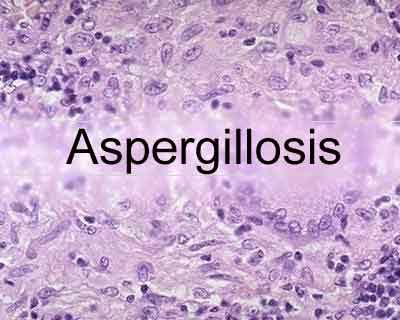- Home
- Editorial
- News
- Practice Guidelines
- Anesthesiology Guidelines
- Cancer Guidelines
- Cardiac Sciences Guidelines
- Critical Care Guidelines
- Dentistry Guidelines
- Dermatology Guidelines
- Diabetes and Endo Guidelines
- Diagnostics Guidelines
- ENT Guidelines
- Featured Practice Guidelines
- Gastroenterology Guidelines
- Geriatrics Guidelines
- Medicine Guidelines
- Nephrology Guidelines
- Neurosciences Guidelines
- Obs and Gynae Guidelines
- Ophthalmology Guidelines
- Orthopaedics Guidelines
- Paediatrics Guidelines
- Psychiatry Guidelines
- Pulmonology Guidelines
- Radiology Guidelines
- Surgery Guidelines
- Urology Guidelines
New test could screen patients at risk of Aspergillosis

A new study published in Nature Communications reports the discovery of a genetic mutation in humans linked to a 17-fold increase in the number of dangerous fungus spores in the lungs.
The results indicate ZNF77 as a key controller of Aspergillus colonization and suggest its utility as a risk-marker for patient stratification which would allow clinicians to screen patients at risk from Aspergillus, and could easily be developed into a test.
Aspergillus is found in soil, pillows, and compost but is capable of living anywhere in a moist environment, so breathing it in is unavoidable and can be dangerous for asthma patients especially with the weak immune system.
Aspergillus is normally cleared from the lungs but 4% of people have this newly discovered mutation and Aspergillus flourishes and colonizes in them in the airways.
"People with asthma, who have had transplant surgery, TB and many other illnesses that lower immunity could feasibly be screened for this genetic mutation. And early detection could save lives," said Dr. Paul Bowyer, lead author of the study.
Read Also: Guideline for management of Aspergillosis
Dr. Sara Gago, a research associate, discovered the increased risk by comparing normal human cells to cells which had been gene edited to contain the mutation. The gene - known as ZNF77 - is mainly responsible for the extracellular matrix of the lungs' epithelial tissue- the membrane that protects them. These mutated cells had a weak response to Aspergillus showing how key epithelial cells are to normal defenses against this airborne fungus.
Dr. Bowyer said: "Until now we never really understood why some people have a much higher Aspergillus load than others. Now that we do, it's quite a significant advance in understanding this disease. We don't yet know how or why the mutation occurs but nevertheless, this discovery provides the basis for a simple and inexpensive DNA test in those who people who are more at risk from Aspergillus."
"ZNF77 doesn't actually occur in mice, so the only viable animal models besides humans are primates. Having developed a way to adapt human cell lines so that they can carry mutations associated with disease, we have avoided using primates or any animals entirely," said Dr. Gago.
For reference log on to https://www.nature.com/articles/s41467-018-06148-7#Sec1

Disclaimer: This site is primarily intended for healthcare professionals. Any content/information on this website does not replace the advice of medical and/or health professionals and should not be construed as medical/diagnostic advice/endorsement or prescription. Use of this site is subject to our terms of use, privacy policy, advertisement policy. © 2020 Minerva Medical Treatment Pvt Ltd